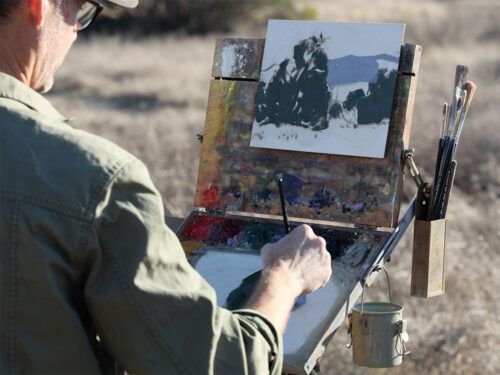Develop Your Problem Solving Abilities

-Realize that problems in your paintings always fall into one or more of the following categories:
Drawing accuracy
Value
Color
Paint application (including edge handling, texture and brushwork)
-Spend time with an artist friend and critique each other’s work.
-Do your best to critique your own work to discover what problems exist. (Tip: try looking at your paintings in a mirror. Seeing the image reversed is like seeing it for the first time, which can make problem areas more apparent.)
-If you can identify a recurring problem that you just can’t get past, find exercises to help you focus on that particular area. (A web search should get you started.)
-Tackle all sorts of different scenes. For example, you’ll get better at painting meadows (or trees, rocks, water, skies, etc.) after you’ve painted them a few dozen times.
Don’t be discouraged when you’re struggling to solve problems. When something goes wrong, identify it using the above list, then come up with the best way to solve it. Problem solving may put the “pain” in painting, but over time you’re developing a growing arsenal of solutions.
Drawing accuracy
Value
Color
Paint application (including edge handling, texture and brushwork)
-Spend time with an artist friend and critique each other’s work.
-Do your best to critique your own work to discover what problems exist. (Tip: try looking at your paintings in a mirror. Seeing the image reversed is like seeing it for the first time, which can make problem areas more apparent.)
-If you can identify a recurring problem that you just can’t get past, find exercises to help you focus on that particular area. (A web search should get you started.)
-Tackle all sorts of different scenes. For example, you’ll get better at painting meadows (or trees, rocks, water, skies, etc.) after you’ve painted them a few dozen times.
Don’t be discouraged when you’re struggling to solve problems. When something goes wrong, identify it using the above list, then come up with the best way to solve it. Problem solving may put the “pain” in painting, but over time you’re developing a growing arsenal of solutions.
